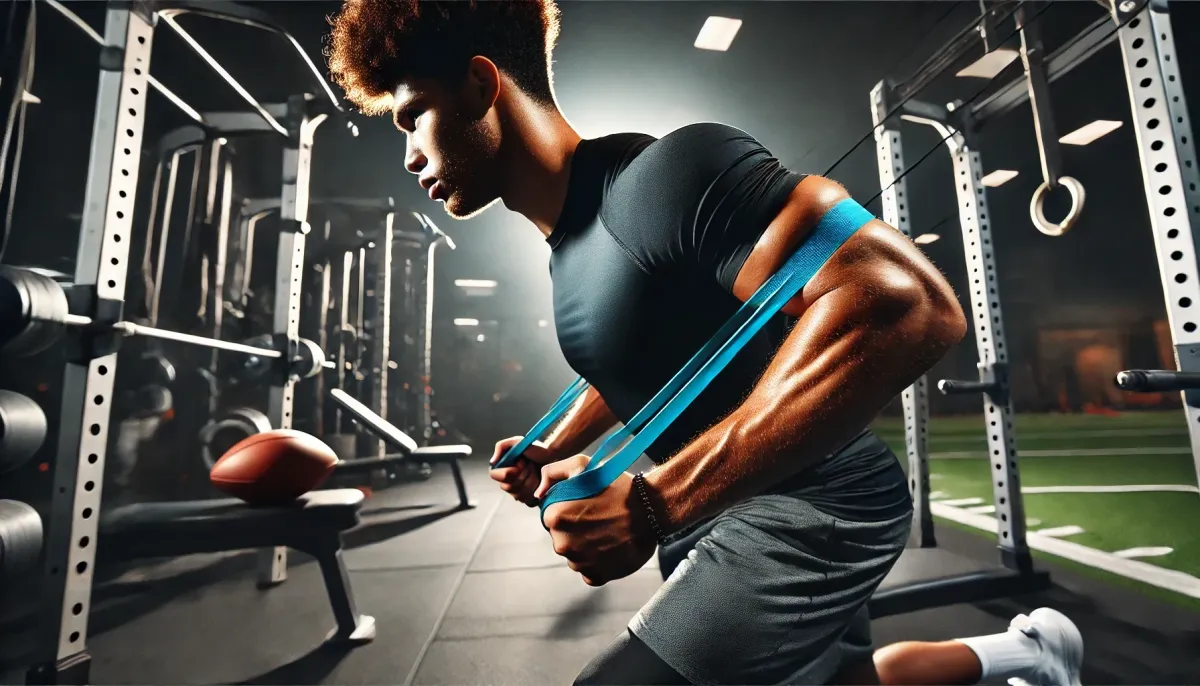Enhance Arm Strength & Recovery with Arm Care: Eccentric, Isometric & Dynamic Correctives

Arm care has become a popular term among quarterbacks, but what does quality arm care really involve? In essence, arm care is a strategic approach to strengthening, stabilizing, and mobilizing the muscles essential for throwing. Effective arm care comprises three main types of exercises: eccentric, isometric, and dynamic. Each type of arm care serves a specific purpose, with the timing, progression, and intensity tailored not only to in-season or off-season demands but also in conjunction with your throwing and lifting volume throughout the week. In this blog, we’ll explain each type of arm care and highlight studies supporting its efficacy.
Eccentric Arm Care
Eccentric emphasis arm care involves slowing down the lowering phase or adding extra load during this portion of each movement. Eccentric loading can be done with tempo or with accentuated eccentric loading (overload) during the stronger portion of the contraction (the lengthening portion). Eccentric loading has been shown to induce hypertrophy and increase strength in the targeted muscles. The muscles quarterbacks train using eccentric arm care are the ones essential for throwing, such as the peri-scapular muscles, the latissimus dorsi, the rotator cuff muscles, and the forearm muscles.

Franchi, M. V., et al. (2017). Eccentric vs. concentric training: Greater muscle hypertrophy from eccentric contractions. Journal of Applied Physiology, 122(4), 926-933.
If interested in a robust arm care regimen, along with throwing and lifting workouts specifically for quarterbacks, take the QB assessment here.
Isometric Arm Care
Isometric exercises involve holding positions for extended periods to stabilize key muscles used in throwing. This is crucial because, over the course of a week, muscles—especially in the back—may become lengthened from repeated deceleration during throwing.
The benefits of isometrics are as follows: First, these contractions are less muscle-damaging than eccentric and concentric focused loading. Second, isometric focused tempos help increase TUT (time under tension) of both the muscle and tendon. Third, long-duration holds at end range challenge joint stability and control over an extended period to “dominate” the accessible range of motion.

Lum, D., & Barbosa, T. M. (2019). Effects of isometric training on muscle strength and tendon stiffness. Journal of Science and Medicine in Sport, 22(6), 644-647.
Dynamic Arm Care
Dynamic exercises are light and quick movements designed to flush the muscles in the arm. Tempoed dynamic contractions help improve rate of force development and apply consistent stress and strain volumes without providing large amounts of muscle damaging stimulus. Focusing on explosive dynamic tempos can prepare the tissue and tendon for the stretch-shortening cycle and elasticity needed for throwing contraction.

Pearce, A.J., et al. (2012). The acute effects of different warm-up protocols on neuromuscular and performance measures. Journal of Science and Medicine in Sport, 15(5), 480-485.
The Importance of These
In general, arm care and correctives increase shoulder mobility, flexibility, strength, and resilience - all of which increase shoulder rotation and velocity for optimal throwing capability.
The ability to use all three phases at different rates and frequencies depending on the arm care goals, training phases, and in/off-season demands allows for a good undulation of stressors while promoting dense and comprehensive arm care.
If interested in a robust arm care regimen, along with throwing and lifting workouts specifically for quarterbacks, take the QB assessment.
